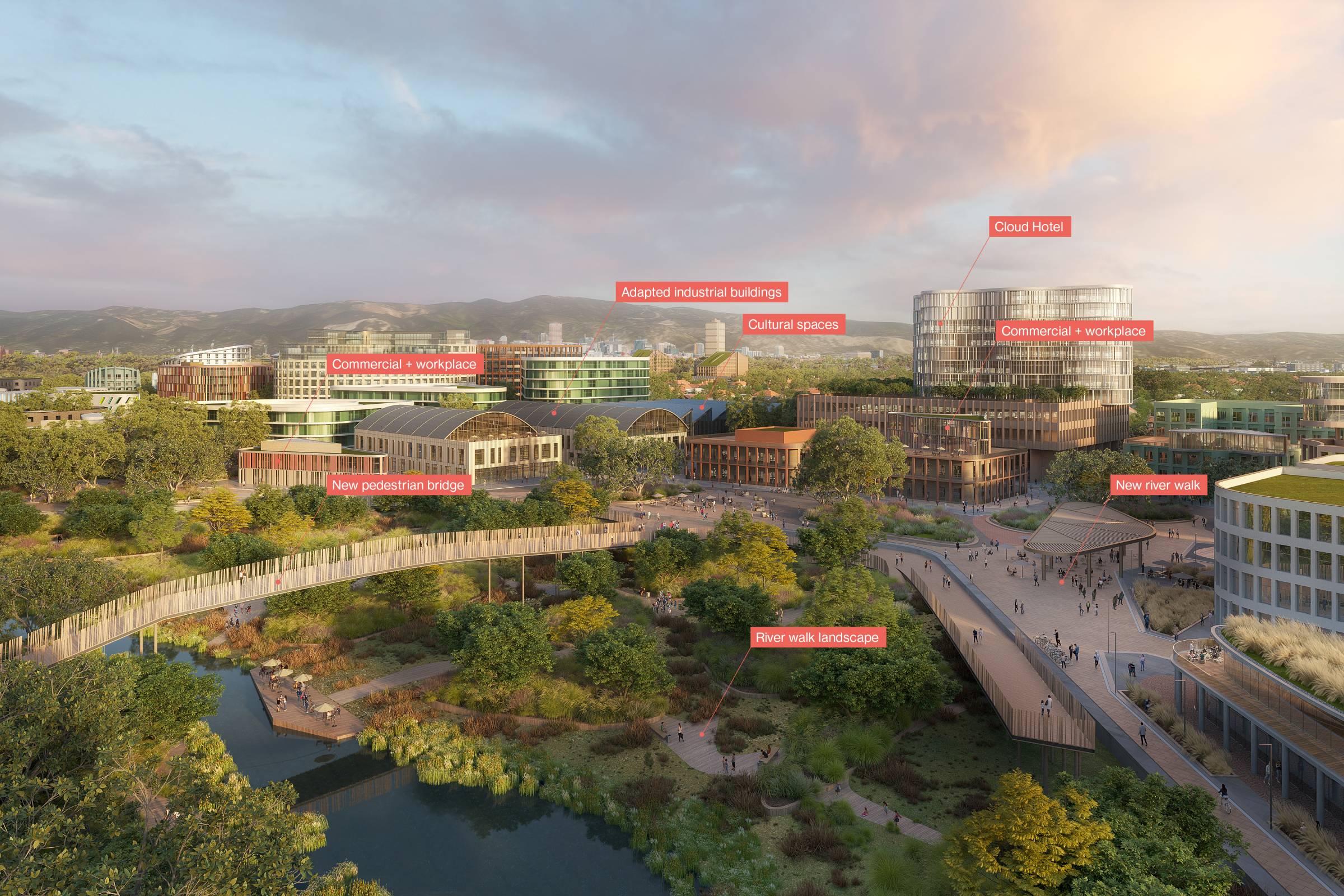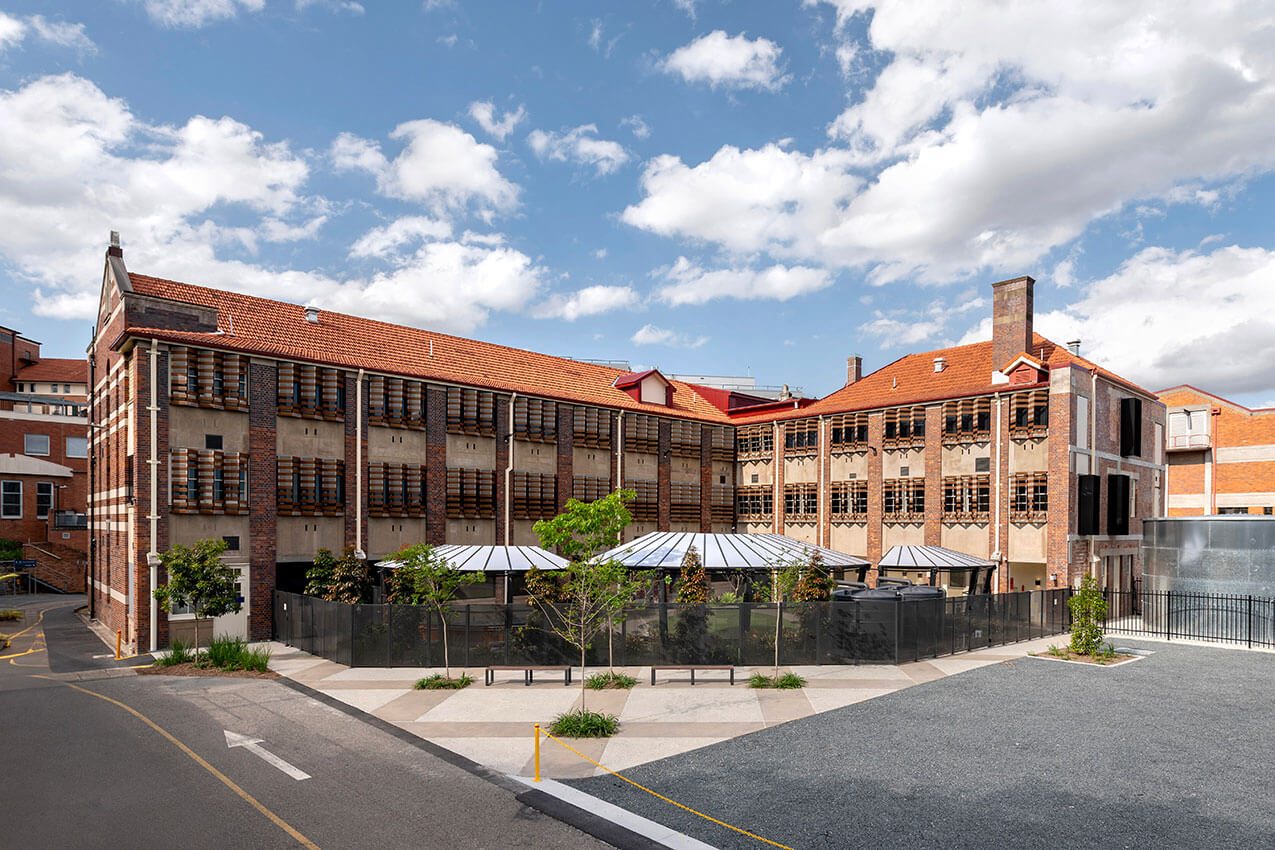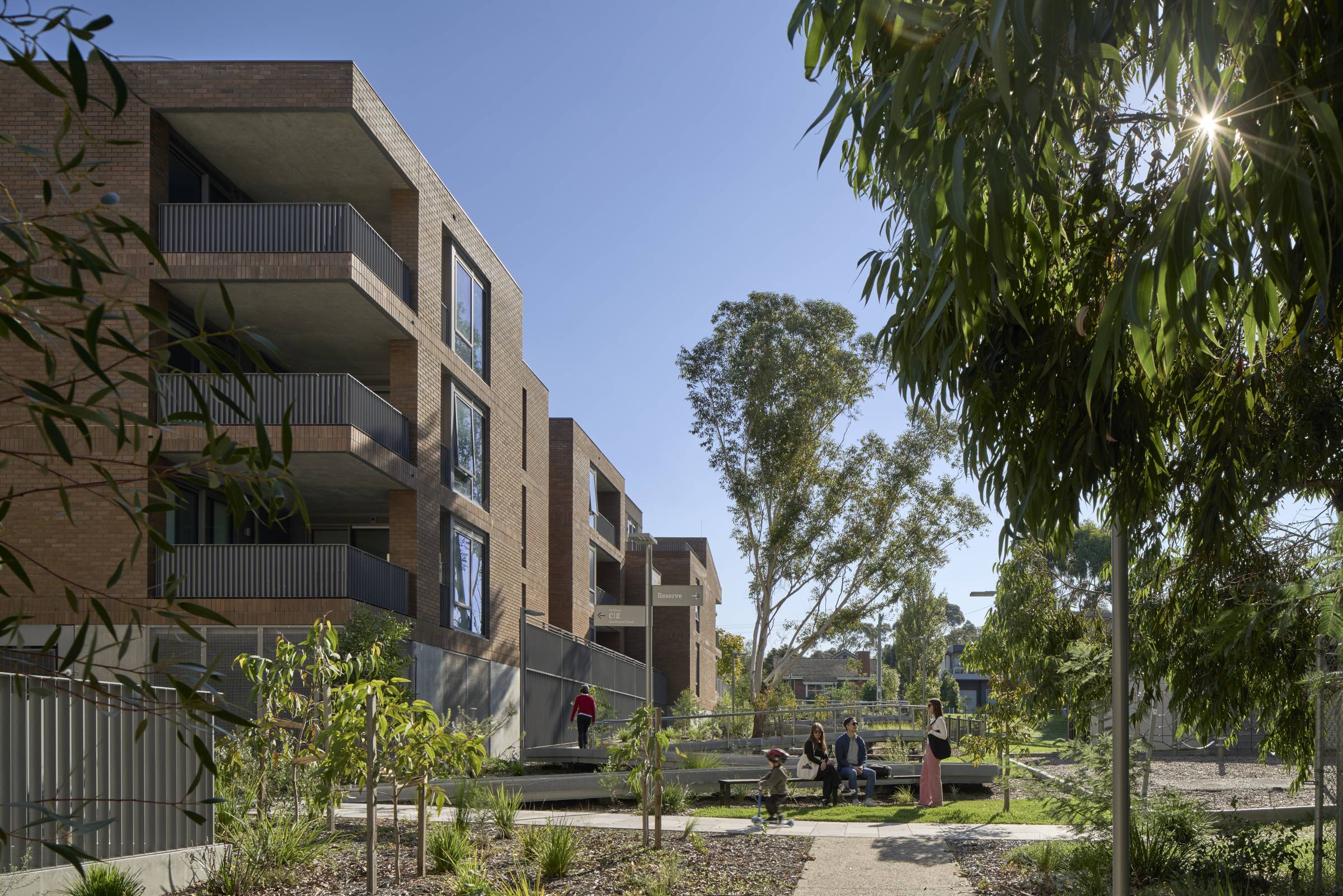Designers from across our practice have shared their vision for Adelaide’s Thebarton, reimagined as a Country-centred landscape and riverside dotted with buildings and spaces for health and innovation, mixed housing, commercial activity, and community interaction.
The concepts are the outcome of our latest Design Charrette, a galvanising annual event that brings together designers from various disciplines, locations, and experience levels to take on a unique design challenge, exploring powerful new ideas for renewing Australia’s cities.
This year’s Charrette was particularly significant for us, marking the 15th anniversary of the initiative and the first time our colleagues from Architectus Conrad Gargett participated. Fellow designers from Architectus Aotearoa were also involved in the event.
With the environment and Designing with Country as priorities, our Charrette participants delved into the challenges and opportunities facing Thebarton, a former light industrial corridor at the edge of Adelaide’s CBD.
As demand for housing and jobs close to transport, services, and amenities grows, we see the area as ripe for renewal, with a strategic location between emerging health and innovation developments and a rich, diverse natural environment.

Where the past meets the future
To imagine the future of Thebarton, we had to grapple with its past – and the lasting impacts of colonisation on Adelaide, developed on the traditional lands of the Kaurna people.
We looked at how we could redefine the suburb, repairing the river and allowing the pre-colonial landscape to ‘re-wild’ Thebarton. By looking through the lens of reconciliation and Designing with Country, we saw the potential for a new kind of parkland and habitat.
We also explored opportunities to attract and support innovation industries, disruptive technologies, and regional growth – regenerating the area sustainably and building resilience for the future.
Our concept identifies three key areas of opportunity revolving around urban renewal, innovation, and regeneration of the river.
A new view of urban renewal
Most of the suburbs that encircle Adelaide’s CBD are low density and low rise, and we challenged our design teams to match the density of the CBD and urban renewal sites in neighbouring Bowden.
This was an opportunity to rebalance the urban form in the context of nature, breaking away from both the Adelaide grid and the traditional street block to design new models that work with Country.
We also saw the need for diverse housing to suit diverse needs – places that are well located and adaptable over time so communities can form and thrive.
Our teams created 3,200 dwellings across the site, with 30% set aside for essential workers and for social and affordable housing.
The mid-size residential blocks – generally 4 to 8 levels – are clustered around open space, with access to active transport links connecting open space and activity areas. These groupings respond to the topography of the river and the overland flow and flooding patterns, to repair the landscape and connect with Country while providing biophilic places to live.
-Total site area – 50 ha / 504,800 m2
-Mixed residential – 354,000 m2
-Community Hub – 5,000 m2 (adaptive re-use of an existing heritage building)

A strategic location for allied health and innovation
With the proposed new Women’s and Children’s Hospital and Adelaide biomedical precinct adjacent to the site, we see Port Road in Thebarton as a prime location for a mixed-use health and wellbeing precinct.
Under our concept, it could incorporate allied health services such as day surgeries and housing for essential workers, plus amenities such as a new supermarket and places to eat or drink.
The proposal strengthens Adelaide’s future economy, with spaces not only for new industries, healthcare, and start-ups but also for defence innovation.
We also designed places for visitors to stay, with three hotels offering different styles of accommodation.
-Health and allied services – 38,000 m2
-Commercial and workplace buildings – 72,200 m2
-Innovation industries / tech companies / start-ups – 5,500m2
-Creative industries – 13,500 m2 GFA (including adaptive re-use of several existing and heritage buildings)
-Food and beverage – 8,800 m2
-Retail – 3,400 m2
-Two small boutique and budget-friendly hotels – 7,200 m2 total – plus a larger, 490-room hotel geared to families – 17,750 m2 (connects to pedestrian bridge to improve walkability to and from recreation and events)

A river returned to its natural state
Our concept regenerates and greens the river’s edge, renewing habitat and engaging with the Karrawirra Parri through a River Walk and other features.
-Regenerated river parkland – 83,000 m2
-New urban park – 69,000 m2
-Events and culture spaces – 20,000 m2
We also created an amphitheatre with an eel-like arbor for shelter and a new pedestrian and cycling bridge to Bowden.
“Adelaide has the perfect mix of fundamentals to become a capital city for the 22nd century. The city has great urban regeneration opportunities defined by its natural landscape, including in places like Thebarton,” says Architectus CEO Ray Brown.
“Our Charrette scheme offers diversity of form, buildings, homes, and environment. And all the spaces in between bring an authenticity – creating a sense of place and community in a new setting with a range of uses.”
Sincere thanks go to our Charrette collaborators and speakers.



